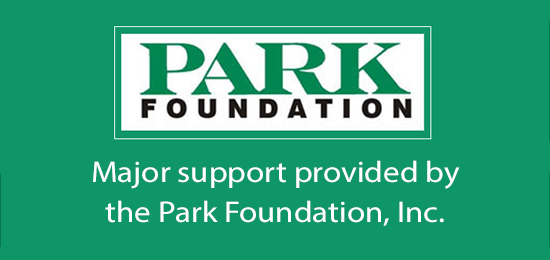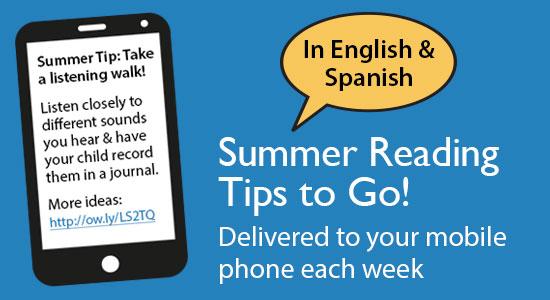
Fluency is a critical skill for a young reader — evidence that he is comfortable "decoding" the words on the page and can read aloud with expression. If your child is struggling with fluency, there are simple things you can do at home to help build confidence and skills.
What is fluency? Why does it matter?
Reading fluency is a child’s ability to read a book or other text correctly, quickly, and with expression.
When kids can read fluently, it’s easier for them to understand what they’re reading. And they read aloud easily and with expression — this makes reading a lot more enjoyable!
Less fluent readers read more slowly and word by word. They must focus their attention on figuring out the words, leaving them little attention for understanding the meaning of text. Comprehension and motivation to read can suffer. Of course, beginning readers aren’t fluent yet, but by the end of first grade, kids should be reading books at their grade level with ease and expression.
Fluency develops gradually over time and through practice. At the earliest stage of reading development, students’ oral reading is slow and labored because students are just learning to “break the code” — to attach sounds to letters and to blend letter sounds into recognizable words.
When fluent readers read silently, they recognize words automatically. They group words quickly to help them gain meaning from what they read. Fluent readers read aloud effortlessly and with expression. Their reading sounds natural, as if they are speaking.
Because fluent readers do not have to concentrate on decoding the words, they can focus their attention on what the text means. They can make connections among the ideas in the text and their background knowledge. In other words, fluent readers recognize words and comprehend at the same time.
How fluent is your child? How do you know?
Fluency develops over time and with lots of practice. The best way for parents to determine how fluently their child can read is to listen to him or her read out loud. When listening, think about:
Phrasing and smoothness: Does your child read word-by-word with frequent hesitation? Does your child read in short phrases, but ignore punctuation? Does your child read with good phrasing and rhythm?
Pace: Does your child read slowly, at a mixed rate, or at a conversational rate?
Expression and volume: Does your child read with a quiet voice, or with volume and expression?
As your child develops fluency, you will notice that your child reads words in a meaningful way, guided by the text's punctuation. Her reading will be at a conversational pace throughout the reading. She will read with expression, and the volume will sound as though she is talking with a friend.
Here are some things to do for practice
Parents can use the summer months to help their child develop reading fluency.
Paired or “buddy” reading
The easiest and best way to help your child develop fluency is to sit with your child and read! Read together every day, which is often called paired or buddy reading. To use paired reading, simply take turns reading aloud. You go first, as your reading provides a model of what good fluent reading sounds like. Then, ask your child to re-read the same page you just read. You'll notice that your child's reading will start to sound more and more like yours. Do this for several pages. Once your child is comfortable enough, and familiar enough with the book, take turns reading page for page.
Reread favorite books
A second way parents can help develop fluency is to build a tall stack of books that your child can read quickly and easily. Encourage your child to reread favorite books over and over again. With each reading, you may notice your child reading a bit easier, a bit faster, and with a bit more confidence and expression.
Ham it up with a script
Sometimes teachers use poetry and simple, short scripts with kids as a way to foster fluency. Often called Reader's Theater, these short scripts can be a great way to beat the heat on a hot, summer day. Print out enough scripts for each reader and divide up the parts. Then, start rehearsing! With Reader’s Theater, there is no need for costumes, and no need to memorize parts. The goal is to encourage your child to read and reread his lines over and over again as part of the play practice. Because it's a play, encourage expression and silliness on behalf of the characters! You’ll have fun and be building fluency at the same time.
Try some of these Reader’s Theater scripts:
- Mrs. Young’s Class Reader’s Theater Scripts
- Aaron Shepard's Reader's Theater Editions
- Teaching Heart Reader’s Theater Scripts and Plays
- Reading A-Z: Reader’s Theater Scripts
Record it
Another fun way to practice reading and build fluency is to have your child create her own audio books. This can be done simply with a tape recorder or audio recording feature or app (like Audioboo) on your phone. Or, use something more sophisticated like StoryKit, where a user can create an electronic storybook and record audio to accompany it. Regardless of the method you choose, your child will be practicing what they want to record and that reading practice is critical. Sharing your audio recordings with family and friends is a great motivator too!
Listen to audiobooks
Listening to a fluent reader read a favorite book provides an excellent model of fluent reading. Audiobooks are a wonderful way to expose your child to language and fluent, expressive reading. Your public library may have a good collection of audiobooks to listen to or check out. Here are some other sources for identifying great titles:
- Our Favorite Audiobooks (Reading Rockets)
- Book Finder (Reading Rockets)
- Notable Children’s Recordings (American Library Association)
Finding the right book
Helping your child build fluency starts with the right book. There are two types of books you will want to look for: books for you to read aloud to your child to model fluent reading, and books for your child to read and reread over and over again.
Books for you to read aloud
The best books to read aloud are books that have lively characters with lots of dialog. As the characters talk to each other, you can really ham it up by using different voices and reading with lots of expression. Keep the reading level just beyond what your child can read on her own. That way, you're introducing her to books that she can aspire to read one day but can enjoy today. It helps if you read the book ahead of time to be sure that it is a book you like. Your enthusiasm will be contagious!
Books for your child to read
In order to build fluency, your child should be reading books that are “just right” — not too hard, not too easy. It’s been called the Goldilocks principle of books! The best books for building fluency may almost seem too easy for your child to read. Read a book for the first time together, using one of our suggestions for practice. Then, schedule reading time into each and every day. As your child develops experience with the book or a poem, listen to hear whether your child is reading the text quickly and accurately, and with expression. These reading behaviors will develop with each rereading, so be sure to keep the same books around for a week or two, and allow time for 6-8 readings of the favorites. Your child's confidence, and fluency, will soar with each successful rereading.
Reading speed
Parents often wonder about reading speed: Does my child read too slowly? Too quickly? Gathering information about your child's reading pace can be helpful. But a word of caution: The ultimate goal of reading is good comprehension and a strong motivation to keep reading. So, be careful about the message you give to your child about reading speed. Faster is not always better! What’s most important is that your child understands what he's read and is excited enough about books to keep reading.
One of the best ways to learn about your child's reading pace is to listen to your child read aloud. Does your child read slowly and word-by-word? Is the reading too fast and without expression? Is the reading at a conversational pace with good expression? Does your child understand what he's read? All of these elements (speed, expression, attention to punctuation, comprehension) work together in fluency.
Measuring your child’s “words per minute”
A second and more formal way to think about your child's reading speed is to consider the number of words your child is able to read correctly in one minute. This is a measure often used within schools, but it's one that parents could use informally at home too. To get a rough estimate of how many words per minute your child can read, have your child read aloud for 1 minute. Count the number of words your child could correctly read. Expectations by grade level vary, but generally:
- By the end of 1st grade, students should be reading more than 50 words correct per minute
- By the end of 2nd grade, students should be reading more than 90 words correct per minute
- By the end of 3rd grade, students should be reading more than 110 words correct per minute
It’s important to remember that words correct per minute is one measure of fluency, and it's a measure that makes the most sense when the information is collected reliably over time. Teachers often gather the information monthly over the course of the school year. As parents, the information could be used as a general informational guideline.
Learn more!
Visit Reading 101: A Guide for Parents on our sister site, Reading Rockets.



